Table of Contents
Why are you doing chops and lifts?
Chops and lifts; a staple of “functional” training, but do you ever ask yourself why you program them?
Do you program these moves because:
- They help with rotation?
- They help with anti-rotation?
- Cuz PNF?
- Cuz Gray Cook said so?
I say this to not poo-poo these moves. I actually think that chops and lifts are AWESOME.
But critically thinking through why we’d program these moves can help so much with knowing when to program what.
I’ve found these moves to be useful for many reasons:
- Promoting thorax expansion
- Increasing hip range of motion
- Making infrasternal angles dynamic
- And so much more!
Want the when, how, and why to take your chops and lift game up a notch?
Check out Movement Debrief Episode 151 below to find out!
Watch the video below for your viewing pleasure.
Or listen to my sultry voice on the podcast version:
If you want to watch these live, add me on Instagram.
Show notes
Check out Human Matrix promo video below:
Below are some testimonials for the class:
Want to sign up? Click on the following locations below:
May 29th-30th, 2021 Boston, MA (Early bird ends April 25th at 11:55 pm!)
August 14th-15th, 2021, Ann Arbor, MI (Early bird ends July 18th at 11:55 pm!)
September 25th-26th, 2021, Wyckoff, NJ (Early bird ends August 22nd at 11:55 pm)
October 23rd-24th, Philadelphia, PA (Early bird ends September 26th at 11:55pm)
November 6th-7th, 2021, Charlotte, NC (Early bird ends October 3rd at 11:55 pm)
November 20th-21st, 2021 – Colorado Springs, CO (Early bird ends October 22nd at 11:55 pm)
Or check out this little teaser for Human Matrix home study. Best part is if you attend the live course you’ll get this bad boy for free! (Release date not known yet 🙁
Here is a signup for my newsletter to get nearly 5 hours and 50 pages of content, access to my free breathing and body mechanics course, a free acute:chronic workload calculator, basketball conditioning program, podcasts, and weekend learning goodies:
[yikes-mailchimp form=”1″ submit=”Get learning goodies and more”]
Kinesiology of the hip: a focus on muscular actions – This article outlines the different hip and muscular actions that we see at various ranges of motion.
Bill Hartman – Daddy-O Pops. My mentor. Thought leader on propulsion arc concept and more!
Using Chops to Increase Range of Motion
Question: How can you use chops to bias expansion and compression to restore shoulder range of motion?
Answer: I’ll do you one better. Let’s dive into how chops and lifts can be used to improve BOTH hip AND shoulder range of motion!
Generally, chops and lifts are driving rotation about the ventral cavity. So if I chop to the right, the effects of expansion within the ventral cavity will be shown left anterior and right posterior:
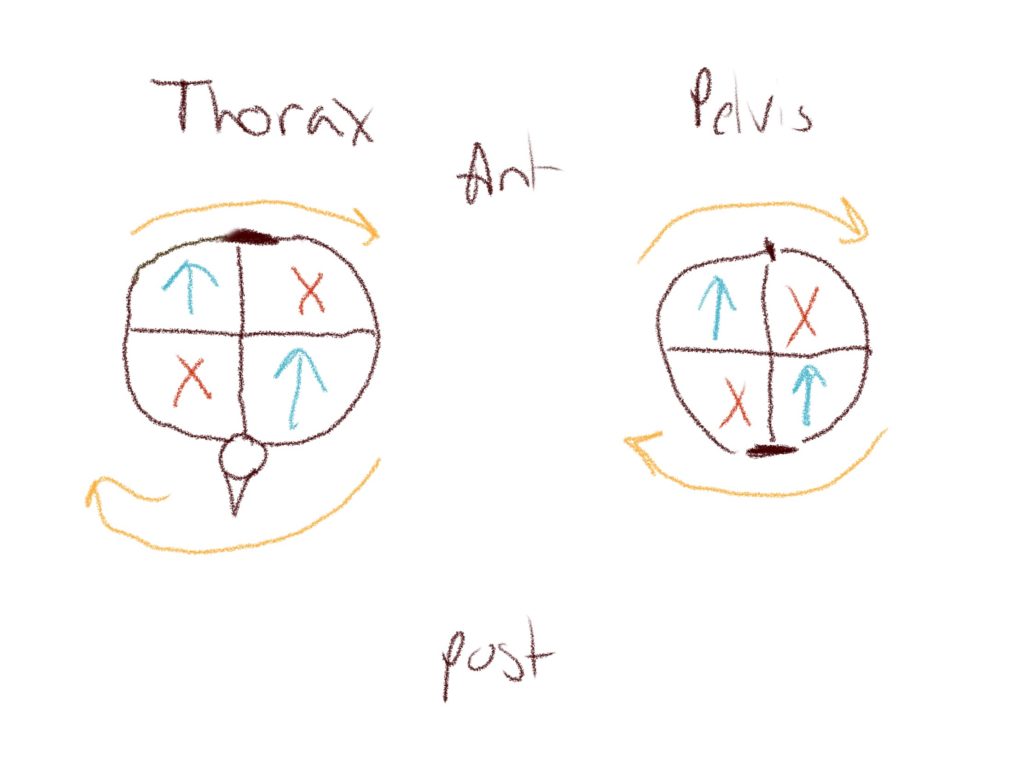
But now how does this change when we go into each respective area?
Lower body component of chops and lifts
Generally, there are two ways to use these movements:
- Increase rotation into a given area (chops)
- Maintain position into a given area (lifts)
Let’s take a half-kneeling cable chop for an example.
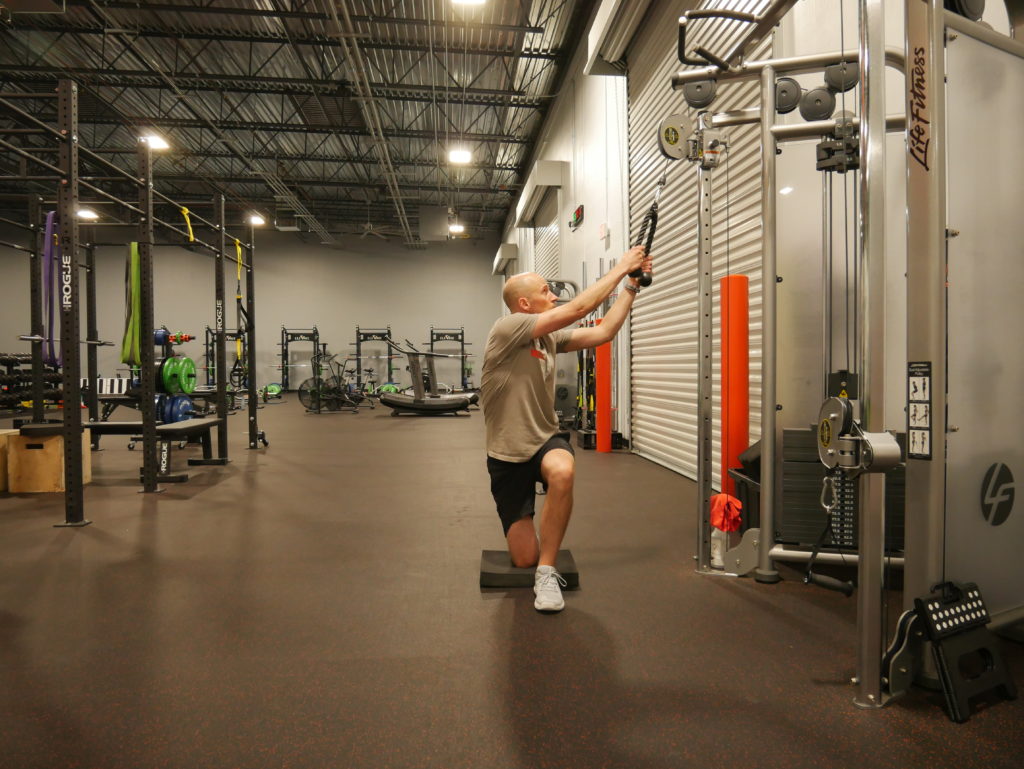
Both legs are in a relatively internally rotated bias, with slight sacral rotation towards the left
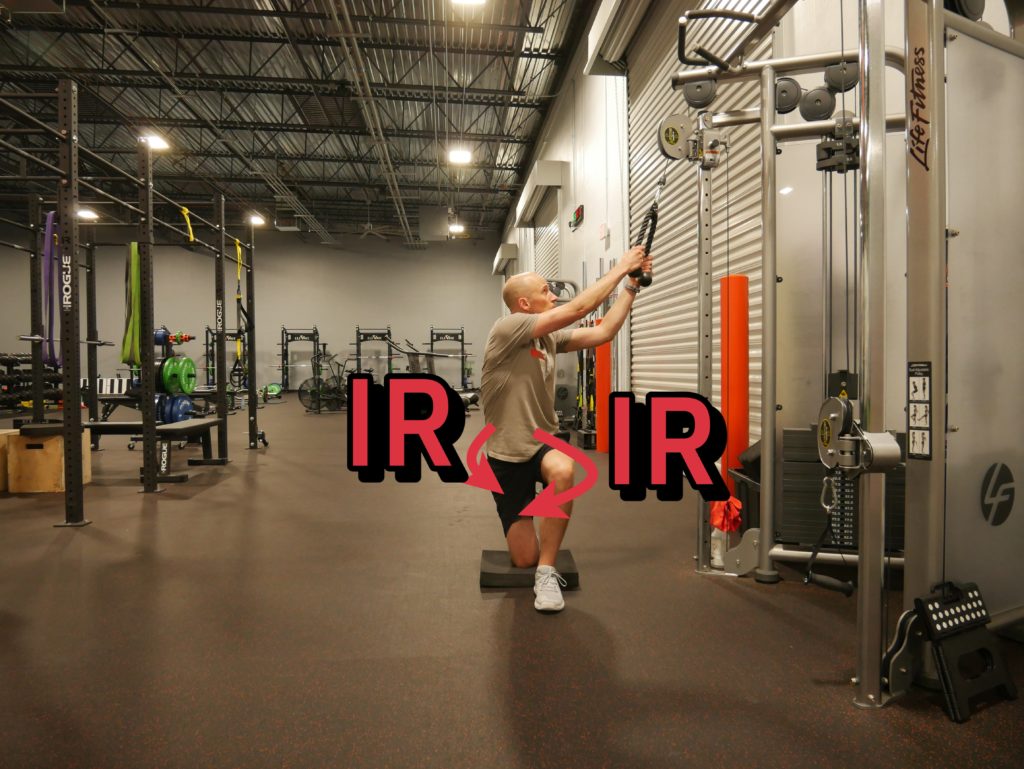
If I chop towards the down leg, I’m going to rotate the sacrum towards down leg, from a leftward facing position. This will increase external rotation occurring on the left side, and further internal rotation on the right.
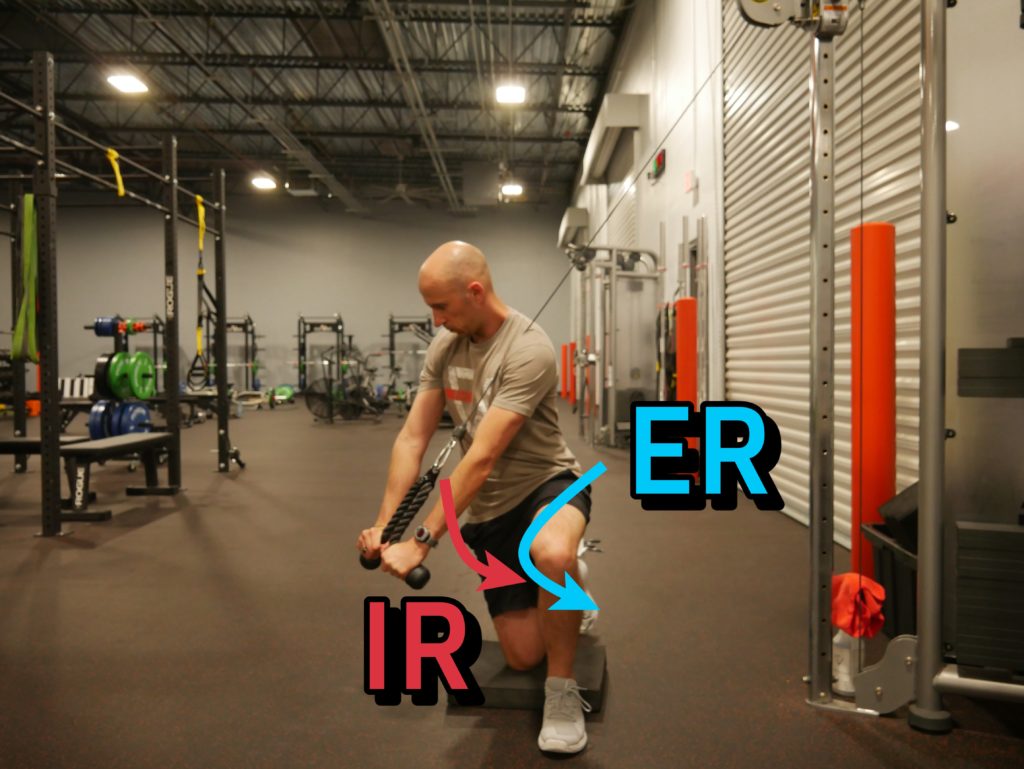
Conversely, if I chop towards the up leg, I will drive further sacral rotation towards the front leg, increasing front leg internal rotation and reducing the amount on the right.
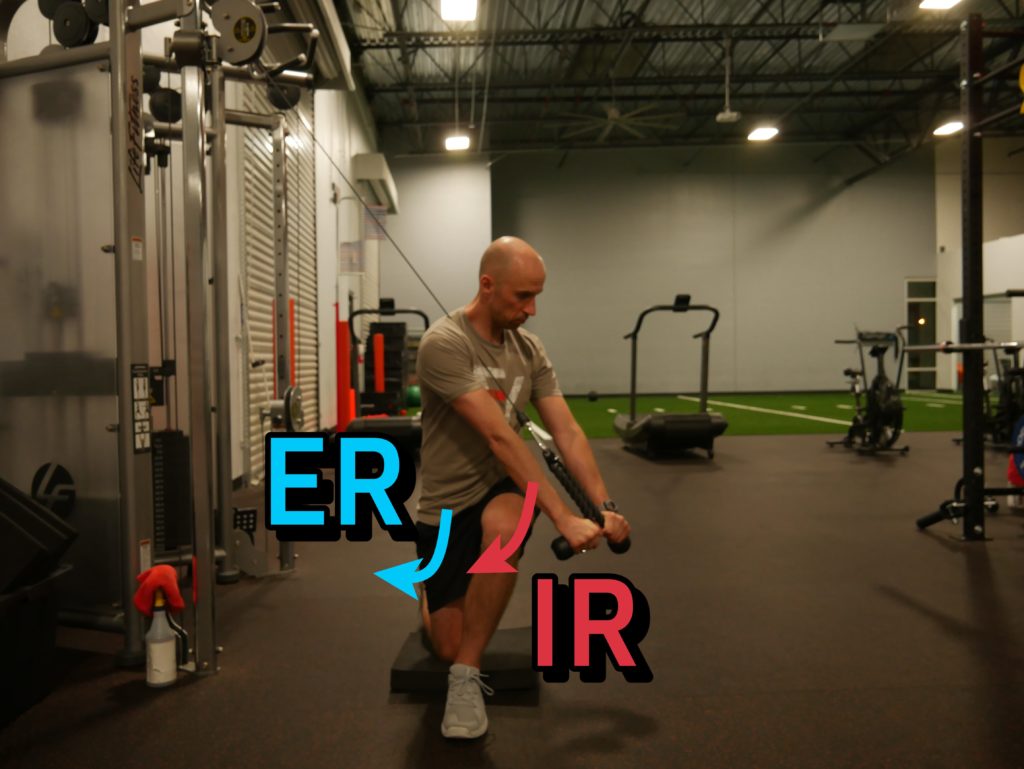
This is generally how I incorporate chops.
Chops help increase rotation towards a given area.
The way I utilize lifts is slightly different. Because I am reaching more overhead, there is more extension occurring throughout the axial skeleton, which limits rotation. Therefore, a lift can be useful to focus on maintaining lower extremity position.
Lifts help maintain position in a given area
If I perform a half-kneeling lift towards the front leg, I would be challenging my ability to maintain the position. There won’t be as much rotational increase.
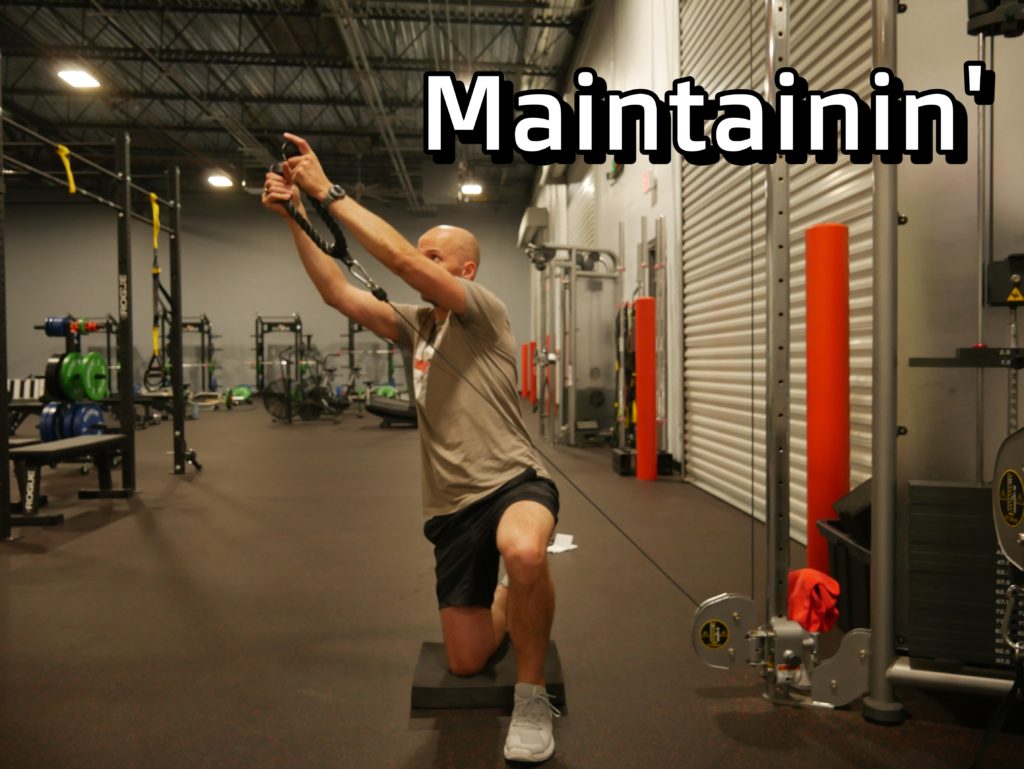
Upper body components of chops and lifts
You can bias airflow even further depending on what type of diagonal movement you perform.
Let’s again, assume I am performing a rotational action to the right. In this case, I will be driving left anterior expansion and right posterior expansion.

From there, you can manipulate airflow with various reaching directions. We can utilize the flexion arc model made popular by Daddy-O Pops Bill Hartman to illustrate this concept:
- Chop (60°): Posterior expansion (T6-8 level)
- Horizontal chop (90°): Anterior expansion
- Lift (120°): Anterior expansion
Again, you have to look at the above ventral cavity orientation to appreciate that this is the starting point that we go from. We then superimpose the reach performed to alter airflow gradients.
Since rotation is still occurring, you will have the above differential in airflow, but you’ll notice different airflow biases occurring in each.
With a chop, there will be more posterior expansion occurring on the left, but it’ll be less so than on the right. I still need that gradient to drive the rotation.
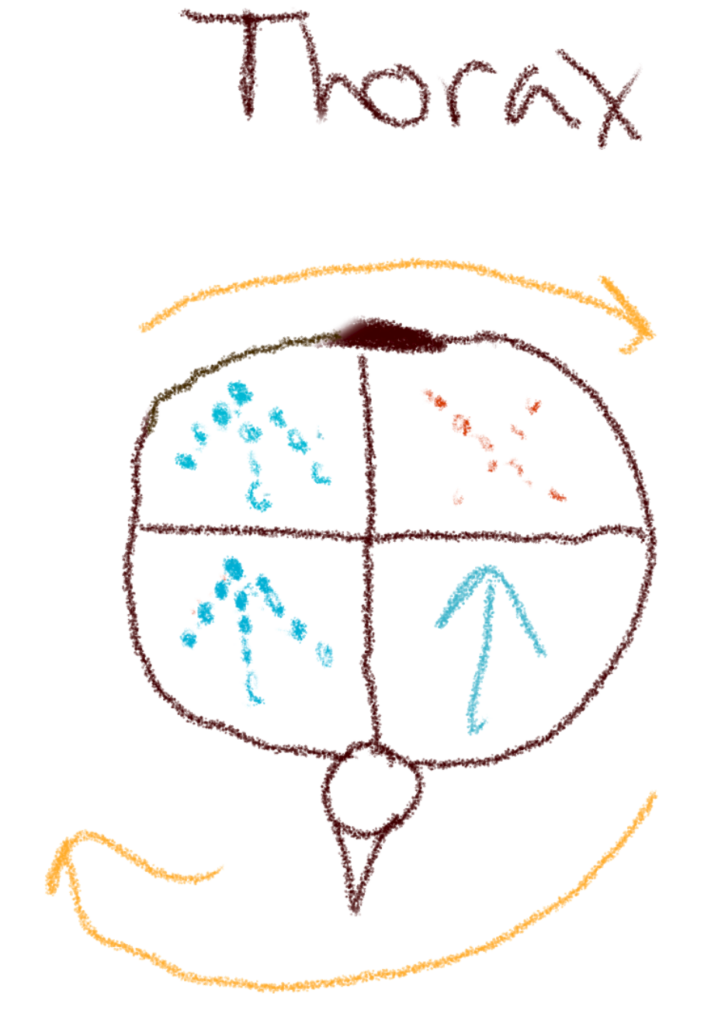
Conversely, a lift is going to drive a BOATLOAD of anterior expansion, with more occurring on the left to drive the rotation.
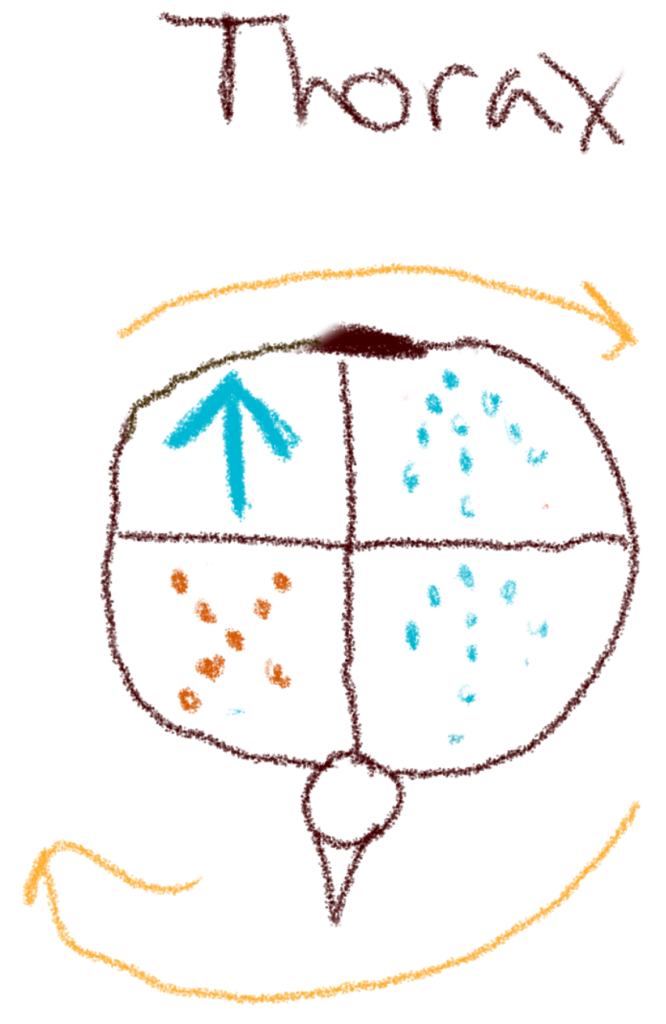
Horizontal chops simply magnify the original rotation.
Head motion during chops and lifts
Question: With chops/lifts in particular, what is the ideal motion of the head? Are there circumstances where you might coach it differently? For example, instead of turning the head with the rest of the axial skeleton towards the direction of the chop/lift, is there a circumstance you might coach it where the shoulders are moving around a non-moving head? Would this be incorrect? If not, how would you explain the difference between the two in terms of axial skeleton mechanics and expansion/compression? And what would be the implications for when to coach it one way or the other?
Answer: The ideal head position depends on what you are trying to drive.
If the eyes follow the rope, you will be orienting the entire spine in the direction you are rotating. Again, if we use right rotation as an example, turning the head can magnify the rotation.
But what if you are an ABSOLUTE REBEL and want to keep the head fixed forward as you chop or lift…
I’m
Glad
You
Asked!
Remember from our cervical rotation debrief, turning the head will create movement all the way down to T5-6. So if you keep your head pointing forward, you would bias expansion in the uppermost segments of the thorax.
Let’s take our classic half-kneeling cable chop to the right. Only this time, let’s fix the head forward.
As we recall, the thorax will be rotating right, creating left anterior and right posterior expansion.
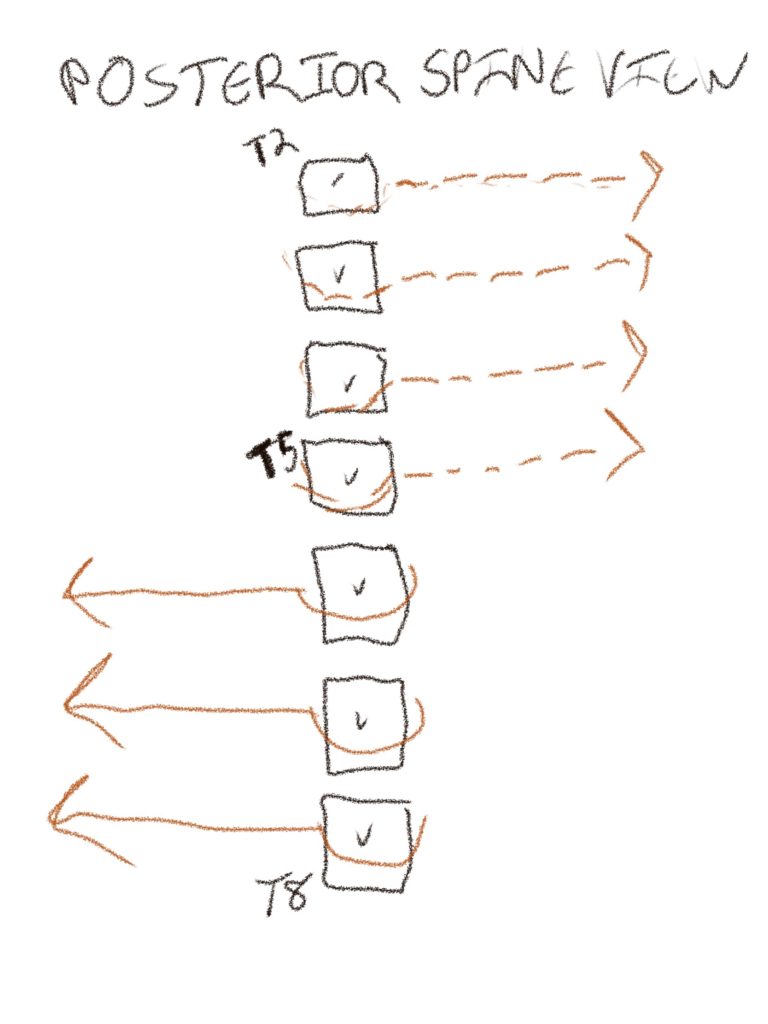
If we look forward, the spine will rotate in the opposite direction from T5 on up. Crazy right?!?!?
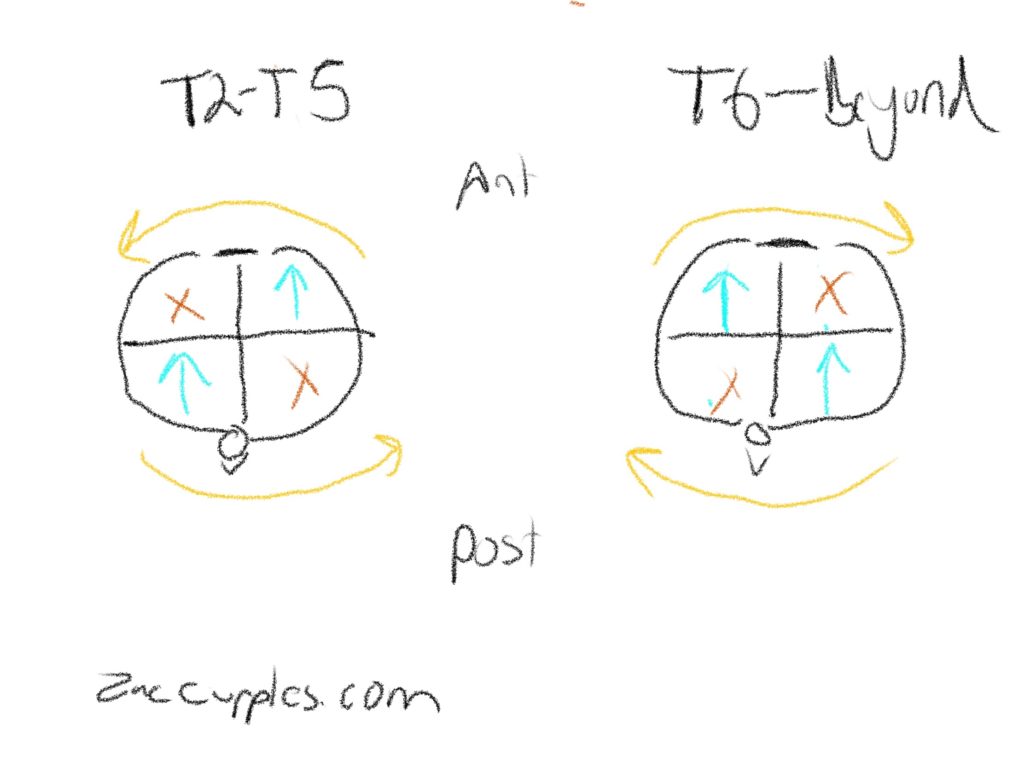
To be clear, that doesn’t mean you are getting this crazy torque of the spine going from one extreme range to another. T2-5 would be turning left from a relative rightward state. The spine could still have a rightward orientation in this example, but you’d have better uppermost expansion in the places you desired.
In the above example, someone with shoulder restrictions such as decreased left horizontal abduction and flexion and right horizontal adduction and extension, this chop variation could be money in the bank!
Sum up
- Chops are useful to bias posterior expansion and increase lower body rotation.
- Lifts are useful to bias anterior expansion and hold lower body positioning.
- Fixing the head forward will help drive contralateral rotation in the opposing direction.
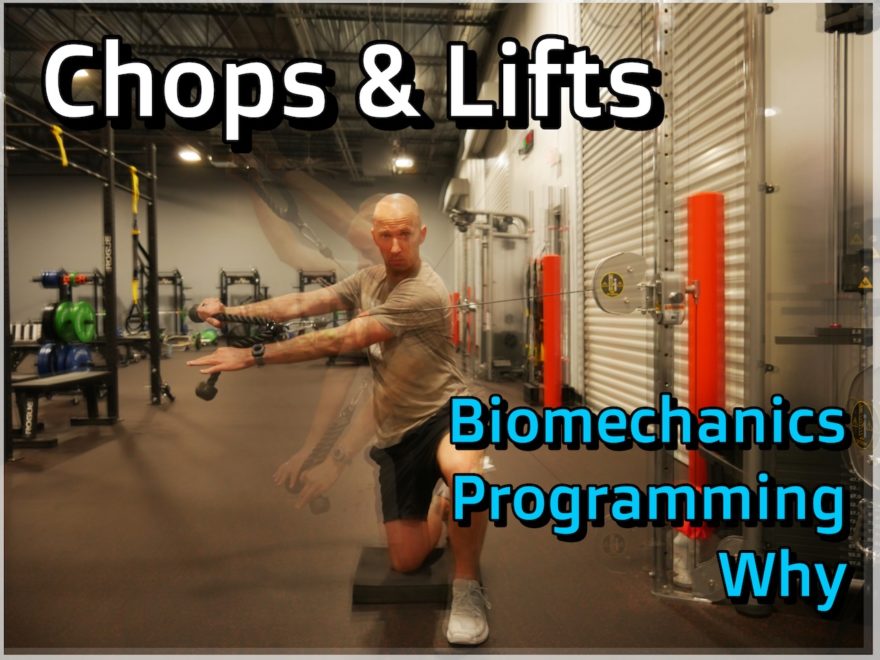
Hey Zac another truly great debrief, thank you so much. My question is at the beginning of lower body component of chops you state both legs are in relative IR. I under stand the left in IR according to the model since its is at 90 degrees but the right leg is straight down. As in the squat examples ER, IR at 90 ish degrees, ER once past sticking point. Is it because you are reaching up to the left which puts right in IR?
0-20 hip extension = IR. That’s why it’s IR.
Glad you enjoyed the debreif 🙂